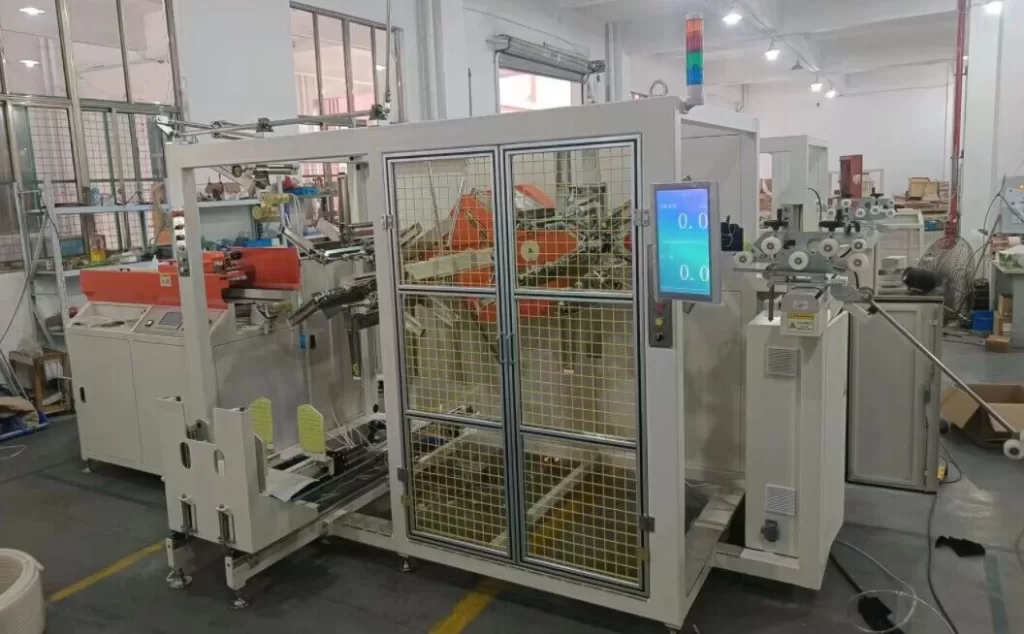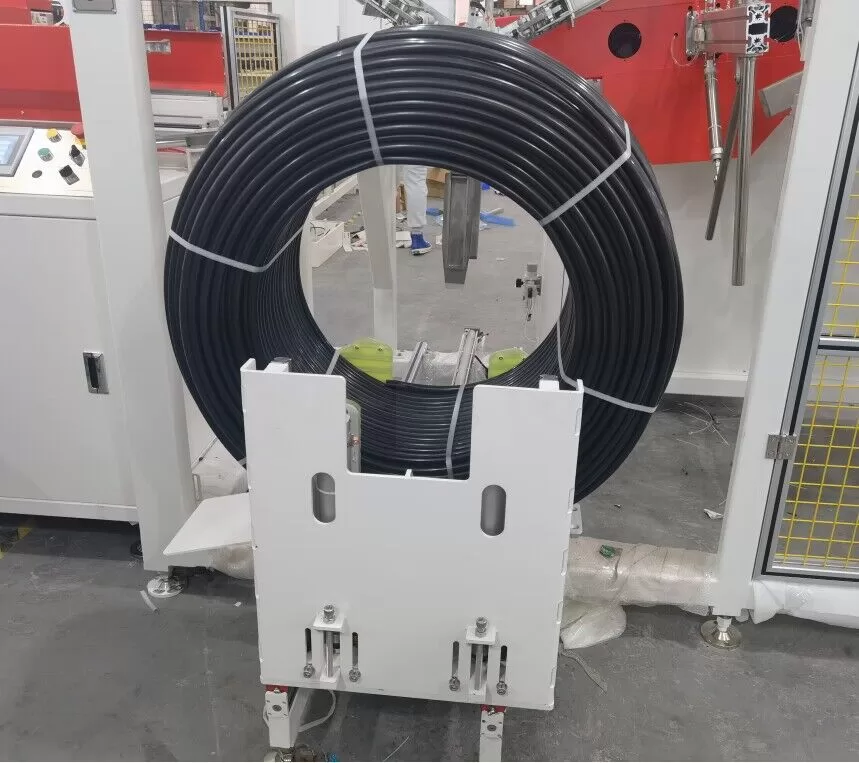Optimizing Production: A Guide to Automatic Pipe and Hose Coiling Machines
Efficient material handling is crucial in modern manufacturing and fabrication. For operations involving long lengths of pipes or hoses, manual coiling is often time-consuming, labor-intensive, and can lead to inconsistent results. Automatic pipe and hose coiling machine systems offer a powerful solution, automating the process of coiling and securing pipes and hoses for easier storage, transport, and subsequent use. These machines streamline operations, effectively combining coiling and strapping functionalities.
How Automatic Pipe and Hose Coiling Machines Work
Understanding the operational sequence of these machines highlights their efficiency:
- Material Feed: The pipe or hose is fed into the machine, often guided by rollers or a feeding mechanism to ensure smooth entry.
- Measuring: An integrated measuring system (like an encoder wheel) tracks the length of the material being fed. Once the pre-set length is reached, the feed stops.
- Cutting (Optional): Many machines feature an automatic cutting mechanism that cleanly severs the pipe or hose at the specified length before or after coiling begins.
- Coiling: The leading end of the material is gripped by a rotating spool or mandrel. The coiling mechanism then winds the pipe or hose layer by layer, often using a traverse system to guide the material for a neat, uniform coil. Tension control is critical here to prevent material damage and ensure coil stability.
- Strapping/Wrapping: Once the desired length is coiled, integrated strapping heads apply and secure plastic straps (typically PP or PET) around the coil at predetermined points. Alternatively, some machines use stretch film to wrap the entire coil. This secures the coil, preventing it from unwinding.
- Ejection: The finished, secured coil is automatically ejected from the coiling mandrel onto a conveyor, accumulation table, or directly into a packaging area.
Key Benefits of Automation
Implementing an automatic pipe coiler and hose coiling machine brings significant advantages:
- Increased Efficiency: These machines operate much faster than manual methods, dramatically increasing throughput and reducing production bottlenecks.
- Reduced Labor Costs: Automation minimizes the need for manual labor dedicated to coiling and strapping, allowing personnel to focus on higher-value tasks.
- Improved Product Quality & Consistency: Automated systems produce consistently tight, neat, and securely strapped coils, reducing the risk of tangling, kinking, or damage during handling and storage. Consistent tension control protects the integrity of the pipe or hose.
- Enhanced Safety: Automating the coiling process reduces repetitive manual tasks and potential ergonomic risks associated with handling long or heavy materials.
- Waste Reduction: Precise measuring and cutting minimize material waste compared to manual estimations. Consistent coiling reduces the likelihood of damaged product write-offs.
Common Applications and Materials
Automatic coiling systems are versatile and find use across various industries:
- Industries: Plumbing, Irrigation, HVAC, Automotive, Telecommunications, Wire & Cable, Construction, Agriculture.
- Materials Handled: These machines can process a wide range of flexible and semi-rigid pipes and hoses, including those made from:
Choosing the appropriate machine requires careful evaluation of operational needs:
- Pipe/Hose Specifications:
- Material Type: Different materials have varying flexibility and handling requirements.
- Diameter Range: Ensure the machine can accommodate the minimum and maximum diameters you process.
- Wall Thickness & Rigidity: This impacts the required coiling torque and tension control.
- Coil Specifications:
- Target Coil Size: Define the desired inner diameter (ID), outer diameter (OD), width, and weight of the finished coil.
- Strapping Needs: Number of straps required, strap material (PP, PET), and tension. Stretch wrapping option?
- Production Requirements:
- Speed & Throughput: Calculate the required coils per hour or shift to meet production demands. Factor in changeover times for different product runs.
- Level of Automation & Integration:
- Standalone vs. Integrated: Will the machine operate independently, or does it need to integrate seamlessly with an upstream extruder or downstream packaging line?
- Control System: PLC-based controls are standard, offering flexibility in setting parameters (length, coil size, strap positions).
- Machine Capacity & Footprint:
- Physical Size: Ensure adequate floor space for the machine and associated handling areas (infeed, outfeed).
- Weight Capacity: Consider the maximum weight of the coils the machine needs to handle.
- Customization:
- Discuss specific needs with manufacturers, such as unique coil handling, labeling requirements, or specialized strapping patterns.
- Maintenance and Support:
- Ease of Maintenance: Assess accessibility for routine checks, lubrication, and part replacement.
- Manufacturer Support: Availability of technical support, training, and spare parts is crucial for long-term operation.
- Budget and Return on Investment (ROI):
- While the initial cost varies significantly based on features and capacity, evaluate the long-term savings from increased productivity, reduced labor, lower waste, and improved quality to determine the ROI.
Maintaining Your Coiling Equipment
Like any industrial machinery, regular maintenance is vital for optimal performance and longevity. Adhering to the manufacturer's recommended maintenance schedule, including cleaning, lubrication, inspection of wear parts (blades, belts, grippers), and sensor checks, will prevent unexpected downtime and ensure consistent operation.

Conclusion
For businesses involved in manufacturing or distributing products involving pipes and hoses, an automatic pipe coiler and hose coiling machine represents a significant technological advancement. By automating the coiling and securing process, these systems deliver substantial improvements in efficiency, consistency, product quality, and operational safety. Carefully evaluating your specific application requirements and selecting the right machine can lead to a rapid return on investment and a more streamlined, competitive operation.
